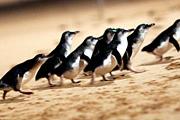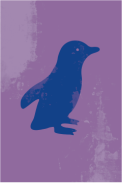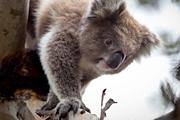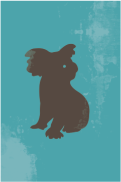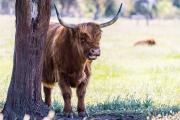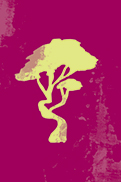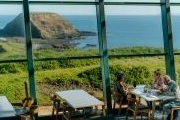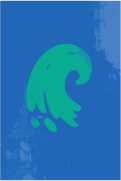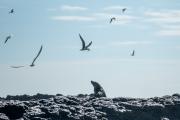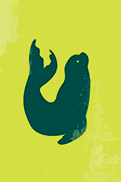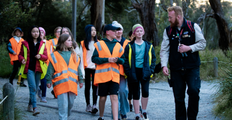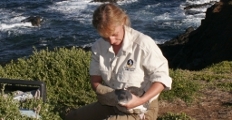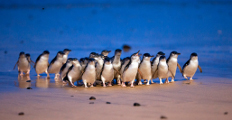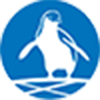Know Your Nature Parks - Autumn
Know Your Nature Parks - Autumn at the Nature Parks
As we head into Autumn the breeding season comes to an end on Millowl (Phillip Island) and it’s time for many of our species to prepare for migration. With the air turning cooler the natural world responds to the change in temperature from the ground to the skies. Read on to find out about what is going on behind the scenes at Phillip Island Nature Parks and what to look out for over the autumnal months.
In The Skies - Birdlife
Short-tailed shearwaters leave our shores
Autumn is a time when adult Short-tailed shearwaters are leaving our shores to begin the long flight to the Bering Strait near Alaska starting with a trip south to feed in the rich waters around Antarctica before heading north. They leave their fat, fluffy chicks behind in the burrows where they lose weight and grow their adult flight feathers. In late April/early May, they will take off to commence their own migration. When the chicks take these practise flights, they often land on roads at night as they are attracted to bright lights, or can end up in unusual places, even your backyard.
The ‘Dark Sky So Shearwaters Fly’ campaign commences in April to encourage residents and businesses to turn off outdoor lighting during the take off period. Key areas within the flight path include Surf Beach, Cape Woolamai, Newhaven, Sunderland Bay, and San Remo.
How you can help:
- Slow down on roads at night and early morning and take note of reduced speed limits
- Turn off any outdoor lights in homes and business in the vicinity (Surf Beach, Cape Woolamai, Newhaven, Sunderland Bay, and San Remo)
- Our rescue program runs between mid-April to early May, please be aware of rangers on roads and changed traffic conditions during this time
- Join the Facebook event to be notified of the “lights out” nights
- If you find an injured shearwater please call Phillip Island Nature Parks Wildlife Clinic on 0409 558 482, these birds will then be assessed on a case by case basis
Migratory birds in Autumn

- As Autumn begins, some of the shorebirds (waders) that use the East Asian Australasian Flyway can be seen across low-tide mudflats frantically feeding in preparation for their mighty long-distance flights to breeding grounds in the northern hemisphere. The largest is the critically endangered Far Eastern Curlew has evolved to store enough fuel to fly from here to China. You can spot them around Rhyll Inlet and are often joined by others such as Bar tailed Godwit, Red Knot and the smallest of the shorebirds the Red necked Stint (which weighs only 25–50g.)
- A number of the shorebirds can be seen starting to change their plumage from greys that blend into local mudflats to red-browns and blacks that help camouflage on arctic tundra nests.
- While northern hemisphere shorebirds prepare to leave, the Double banded Plover the only shorebird to do an east-west migration can be seen arriving from summer breeding grounds in New Zealand.
- Autumn marks the end of the season for our beach nesters. Parent birds may still be on eggs or with growing chicks, however many pairs begin forming winter flocks and with fledglings may move off the island to the Mornington Peninsula /west coast or east to the Bass Coast.
- Look for yellow robins and flame robins that have arrived back on Phillip Island from as far away as Tasmania.
- New Zealand dotterel arrive from the highlands of New Zealand to escape the cold winter. Look for these shorebirds on local beaches such as Kitty Miller Bay and Observation Point.
- The migration of birds of prey such as Swamp Harriers from Tasmania to mainland Australia reaches a peak. Look for them around wetlands – you can recognise them by the white band on their tail.
- Pacific gulls have brought their chicks from the islands off Wilsons Promontory to feed. These large gulls are listed as significant fauna in the Nature Parks because of their colonial nesting habits.
- Many of the hooded plover chicks have been banded and have an individual leg flag that can be read in the field with binoculars or telescope. This means sightings can be logged into a national ‘Beach Nesting Bird’ database run by Birdlife Australia. Information about the lives of our shorebirds will be used to better protect them for the future.
On The Ground
Echidnas are still out and about, so please be careful when driving as they may sometimes cross a road!
Bush-stone curlew successful breeding
The Bush-stone curlew is critically endangered in Victoria, and locally extinct on Millowl (Phillip Island). At Nature Parks, we have two breeding pairs, and are excited to announce two chicks have hatched at the Koala Conservation Reserve! The chicks will form part of a broader recovery program for the threatened species in Victoria. Be sure to pay them a visit to admire their fluffy plumage next time you are at the reserve.
Flora - Yellow (Austral) Sea Lavender
Once over the bridge onto Churchill Island, visitors are greeted with sprays of Yellow (Austral) Sea Lavender, Limonium australe var australe lining the roadside. The Yellow Sea Lavender is an endangered indigenous plant that grows in mangrove and saltmarsh plant communities. This is not to be confused with the common garden plant Sea Lavender, Limonium perezeii nor the invasive environmental weed Sicilian Sea Lavender, Limonium hyblaeum, both of which have purple flowers and originally come from the Canary Islands and Sicily respectively.
Monitoring of the Yellow Sea Lavender is carried out by rangers and volunteers each year during the autumn flowering period to ensure that the populations have not been invaded by Sicilian Sea Lavender. There are large infestations of Sicilian Sea Lavender west of Port Phillip but luckily only a few plants have appeared on Phillip Island.
Flowering plants to look out for in Autumn

Planting season is here!
Autumn is the best time of year to plant in your garden, with higher rainfall and forgiving conditions for young seedlings to establish. Head to the Barb Martin BushBank Native Plant Nursery to select some indigenous plants for your garden – indigenous and endemic plants support native wildlife and are adapted to the climate on Millowl. If you need advice be sure to ask for some, the team at the nursery will help you select some plants that are right for what you need.
In The Trees - Koalas
The Bluegum Koala Trail has opened at the Koala Conservation Reserve. This is a penned walking trail that showcases four koalas (one male and three females). It can be found at the back of the Koala Conservation Reserve, and features large eucalypts, acacias and other native vegetation. Take a seat on the boundary and peer in at the resident koalas or take a wander at ground level.
On Our Shores and In Our Waters
Penguins moulting
After the busy breeding season, Little Penguins are completing the process of moulting. This is when penguins go through a complete rejuvenation by replacing all their old feathers with new ones. This gain, however, does not come without pain. The penguins must spend about 17 days ashore, suffering from the heat, covered in fleas and ticks and with no food or water.
Before the moult, they feed intensively and almost double their body weight to withstand the long fast. During moult, you will often see penguins onshore during the day as well as scatters of feathers around their burrows. After moult, the penguins are very thin when they emerge from their burrows with their sleek new feathers which ensure they are fully waterproof and prepared for long feeding trips in the cold winter seas. They head straight out to sea to feed, to enjoy a meal at last!
- Although not every penguin breeds annually, every adult penguin must moult every year. Straight out of the water, a penguin's skin is completely dry due to their feathers that are perfectly designed to keep them completely waterproof. Despite producing an oil in the preen gland that conditions their feathers, over the course of a year the feathers get worn and waterproofing is maintained by growing a completely new set of feathers. This is called a catastrophic moult because it is indeed quite a stressful time of year for the Little Penguins
- Many penguins will use burrows to moult in, but they aren’t tied to a burrow like they are in breeding season and will happily moult anywhere they have some cover - it’s not uncommon to find them moulting under our boardwalks!
Seal Rocks news
Australian fur seal females and pups remain at Seal Rocks. They are currently moulting and females are coming and going to feed the pups whereas big breeding males have left and are off foraging out in Bass Strait. Some juveniles are still around - they sometimes wait to see if they can still get some milk from mum (either by being sneaky or if the recent pup has died).
The pups are getting bigger and spending more time in the water playing and practicing important skills – for example, throwing around a piece of kelp in the shallows allows them to practice the skills they need for throwing around an octopus or big fish once they wean from their mum.
Wildlife Rehabilitation
As always, the greatest thing you can do for wildlife is to keep it wild. These animals are very different to domestic animals, and have developed very specific diets, behaviours and habitat needs over thousands of years.
For more information, or if you find injured wildlife, you can call Phillip Island Nature Parks on 03 5951 2800 or Wildlife Victoria (24 hours/7 days a week) on 03 8400 7300.





